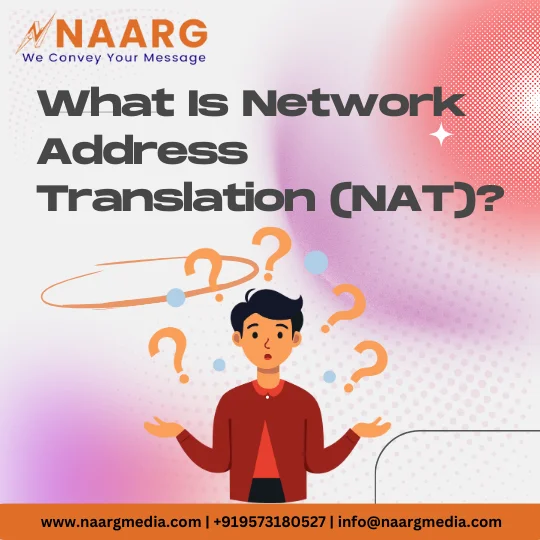Today, where billions of devices communicate seamlessly over the internet, ensuring efficient and secure communication is no small feat. Have you ever wondered how your home router juggles multiple devices—laptops, phones, and smart TVs—while using a single public IP address?
The answer lies in the magic of Network Address Translation (NAT). But what is network address translation? NAT is behind-the-scenes technology that powers modern networking.
It not only conserves the ever-dwindling supply of IP addresses but also adds an essential layer of security to your online activities. In this blog, we’ll unravel the intricacies of NAT, what network address translation is, and the various ways it impacts our daily lives.
By the end, you’ll understand why NAT is one of the unsung heroes of the internet age.

What Is Network Address Translation (NAT)?
NAT, or Network Address Translation, is a networking process that allows multiple devices within a private network to share a single public IP address when connecting to the internet.
It acts like a digital translator and bridges the gap between private networks and the global web, thus making communication seamless while conserving the limited pool of IPv4 addresses.
According to the latest stats, the rapid growth of internet-connected devices is expected to reach 29.3 billion by 2030.
Network address translation has become indispensable and not only helps tackle the IP address shortage but also provides an added layer of security by masking internal network details from external threats.
The Role of NAT in Modern Networking
Today the internet fuels everything from social interactions to global commerce; network address translation (NAT) plays a pivotal role in keeping our online ecosystems running smoothly.
It acts as a gateway between private networks and the public internet; NAT ensures that billions of devices can communicate efficiently despite the limited supply of IPv4 addresses.
Moreover, beyond conserving IP addresses, NAT enhances security by concealing private network structures, making it harder for attackers to target specific devices. Network address translation is the silent workhorse that bridges connectivity and security in modern networking.
Types of NAT
Network Address Translation (NAT) comes in several types, each tailored to specific use cases in networking.
Here’s an overview of the main types:
1. Static NAT (One-to-One NAT)
Static NAT maps a single private IP address to a single public IP address.
This type is ideal for devices that need a consistent public presence, like web servers or email servers.
2. Dynamic NAT
In dynamic NAT, a pool of public IP addresses is assigned to a group of private IP addresses.
When a device requests internet access, it temporarily gets a public IP from the pool. Once the session ends, the IP is returned to the pool for reuse.
3. Port Address Translation (PAT) or Overloading
PAT, a subset of dynamic NAT, allows multiple devices to share a single public IP address.
By assigning unique port numbers to each connection, PAT ensures efficient IP usage while allowing thousands of devices to communicate simultaneously.
4. NAT64
NAT64 facilitates communication between IPv6 and IPv4 networks.
As the world transitions to IPv6, NAT64 is a critical tool for maintaining interoperability between old and new systems.
How does Network Address Translation Work?
Network Address Translation (NAT) operates as a mediator between private networks and the public internet, ensuring seamless communication while conserving IP addresses.
Here’s a step-by-step explanation of how NAT works:
1. Device Sends a Request
When a device in a private network (e.g., a smartphone or laptop) wants to access the internet, it sends data packets to the router.
These packets contain the device’s private IP address and the destination IP address of the server it wants to communicate with.
2. Router Replaces Private IP with Public IP
The NAT-enabled router intercepts these packets and replaces the private IP address with the router’s public IP address.
This step is essential because private IP addresses aren’t directly routable on the internet.
3. Assign a Unique Port Number
To distinguish between multiple devices sharing the same public IP, the router assigns a unique port number to each connection.
This combination of public IP and port number creates a unique identifier for the data packets.
4. Packets Reach the Destination Server
The modified data packets are sent to the destination server using the public IP address.
The server processes the request and sends a response back to the public IP address and port number.
5. Router Translates Back to Private IP
When the response packets arrive, the NAT router uses its translation table to match the port number with the original private IP address.
It then forwards the data to the corresponding device in the private network.
The Advantages of NAT
Network Address Translation (NAT) offers several significant benefits that make it a cornerstone of modern networking.
Here are the key advantages:
1. IP Address Conservation
NAT allows multiple devices to share a single public IP address, reducing the demand for unique IPs.
This is especially critical with the limited availability of IPv4 addresses.
2. Enhanced Security
By masking the private IP addresses of devices, NAT provides an additional layer of security.
External entities cannot directly access devices within the private network, reducing exposure to cyber threats.
3. Simplified Network Management
NAT enables businesses to use a single set of private IP addresses across multiple networks, making network design and management more straightforward.
4. Seamless Internet Access for Private Networks
NAT facilitates internet connectivity for devices within private networks without requiring public IP addresses for each device, ensuring cost efficiency and resource optimization.
5. Support for Legacy Systems
NAT bridges communication between IPv4 and IPv6 networks, allowing older devices to coexist with modern infrastructures during the ongoing transition to IPv6.
NAT’s ability to address IP shortages, enhance security, and streamline network operations makes it a vital tool for businesses and individuals alike.
Contact us today to learn more about our professional translation services.

